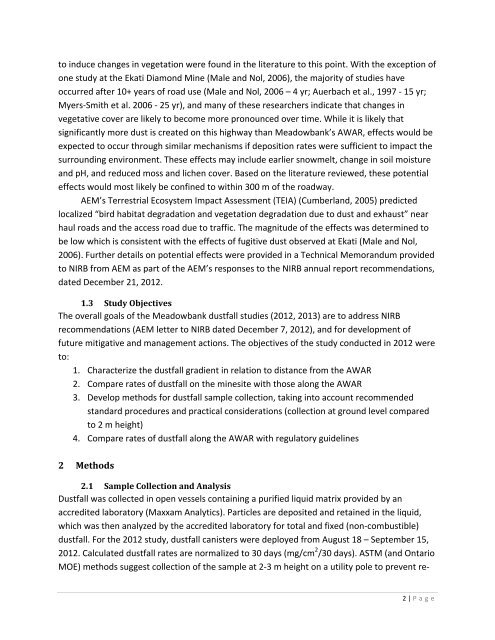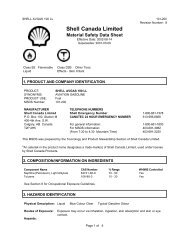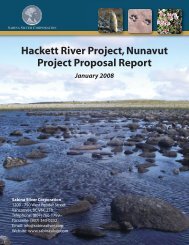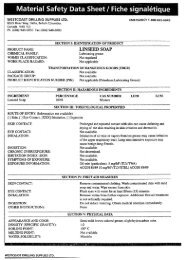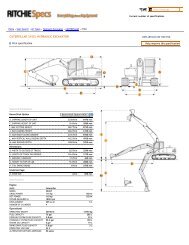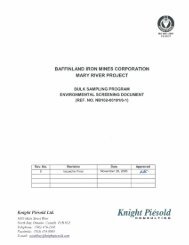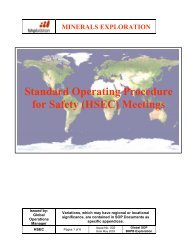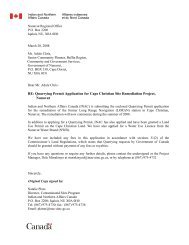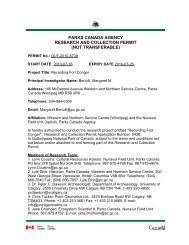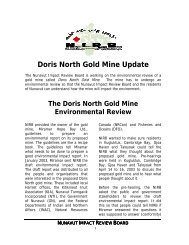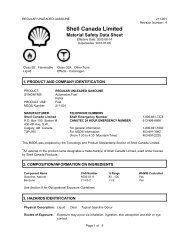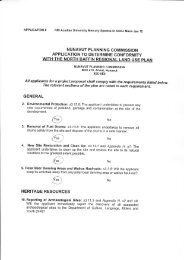130419-03MN107-App G7 Air Monitoring-IA2E.pdf - NIRB
130419-03MN107-App G7 Air Monitoring-IA2E.pdf - NIRB
130419-03MN107-App G7 Air Monitoring-IA2E.pdf - NIRB
You also want an ePaper? Increase the reach of your titles
YUMPU automatically turns print PDFs into web optimized ePapers that Google loves.
to induce changes in vegetation were found in the literature to this point. With the exception ofone study at the Ekati Diamond Mine (Male and Nol, 2006), the majority of studies haveoccurred after 10+ years of road use (Male and Nol, 2006 – 4 yr; Auerbach et al., 1997 ‐ 15 yr;Myers‐Smith et al. 2006 ‐ 25 yr), and many of these researchers indicate that changes invegetative cover are likely to become more pronounced over time. While it is likely thatsignificantly more dust is created on this highway than Meadowbank’s AWAR, effects would beexpected to occur through similar mechanisms if deposition rates were sufficient to impact thesurrounding environment. These effects may include earlier snowmelt, change in soil moistureand pH, and reduced moss and lichen cover. Based on the literature reviewed, these potentialeffects would most likely be confined to within 300 m of the roadway.AEM’s Terrestrial Ecosystem Impact Assessment (TEIA) (Cumberland, 2005) predictedlocalized “bird habitat degradation and vegetation degradation due to dust and exhaust” nearhaul roads and the access road due to traffic. The magnitude of the effects was determined tobe low which is consistent with the effects of fugitive dust observed at Ekati (Male and Nol,2006). Further details on potential effects were provided in a Technical Memorandum providedto <strong>NIRB</strong> from AEM as part of the AEM’s responses to the <strong>NIRB</strong> annual report recommendations,dated December 21, 2012.1.3 Study ObjectivesThe overall goals of the Meadowbank dustfall studies (2012, 2013) are to address <strong>NIRB</strong>recommendations (AEM letter to <strong>NIRB</strong> dated December 7, 2012), and for development offuture mitigative and management actions. The objectives of the study conducted in 2012 wereto:1. Characterize the dustfall gradient in relation to distance from the AWAR2. Compare rates of dustfall on the minesite with those along the AWAR3. Develop methods for dustfall sample collection, taking into account recommendedstandard procedures and practical considerations (collection at ground level comparedto 2 m height)4. Compare rates of dustfall along the AWAR with regulatory guidelines2 Methods2.1 Sample Collection and AnalysisDustfall was collected in open vessels containing a purified liquid matrix provided by anaccredited laboratory (Maxxam Analytics). Particles are deposited and retained in the liquid,which was then analyzed by the accredited laboratory for total and fixed (non‐combustible)dustfall. For the 2012 study, dustfall canisters were deployed from August 18 – September 15,2012. Calculated dustfall rates are normalized to 30 days (mg/cm 2 /30 days). ASTM (and OntarioMOE) methods suggest collection of the sample at 2‐3 m height on a utility pole to prevent re‐2 | Page


